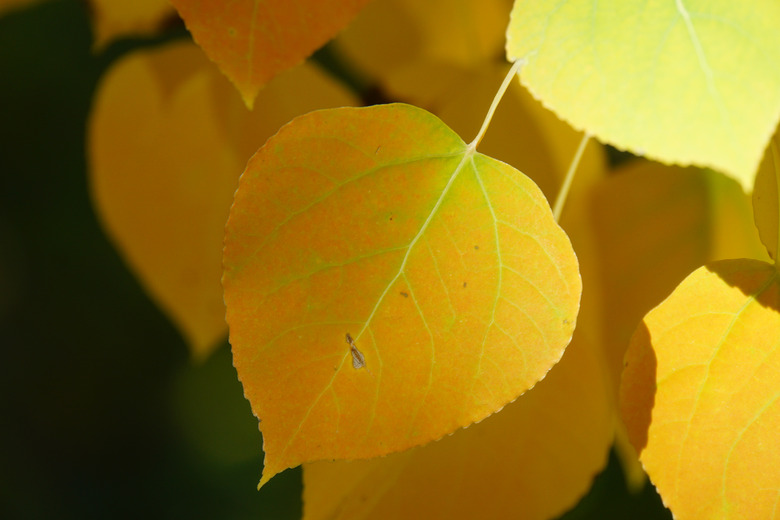Treatment Of Black Leaf On Aspen Trees
We may receive a commission on purchases made from links.
Aspen trees (Populus spp.) are some of the most widespread trees across North America. Though they might be common, aspen trees are a sight to behold for their brilliant yellow foliage in the fall and stark white bark.
However, fungal diseases can cause black spots on aspen leaves and blemish its stunning foliage in the summer and fall. Beyond aesthetics, prolific black spotting could even harm the tree during the cold season. Fungal diseases can be prevented and reduced with strategic planting, watering, and leaf maintenance.
Fungi That Cause Black Spotting
Fungi That Cause Black Spotting
Several types of fungi can potentially cause black spotting on aspen leaves:
- Marssonina populi is particularly harmful to aspens in the Western states. These start as brown flecks that progress to black patches on severely infected leaves. Premature leaf defoliation may occur in the spring and the fall.
- Ciborinia causes a leaf disease that turns the whole leaf brown before hardened black masses form on the infected leaf. Eventually, these masses fall off, leaving holes in the leaves.
- Venturia causes leaf and shoot blight, primarily in aspens located in the mountains. Leaves on diseased shoots will become blackened and deformed.
Left untended, a fungal infection will stunt an aspen's growth. In more severe cases, repeated premature leaf drop caused by fungal infections can kill a tree. Reducing the spread of these spores is necessary to minimize the harm done to the aspen.
Treating Aspen Blight
Treating Aspen Blight
Once you see the blemished, blackened leaf on an aspen, it's time to start a treatment plan to salvage next year's growth. Remove the infected leaves and reduce the spread of spores by:
- Defoliating blackened leaves in the fall.
- Pruning back infected branches in the fall.
- Raking away and destroying fallen infected leaves to remove spores from the immediate area.
- Keeping moisture to a minimum.
Reducing the spore spread is the first step, but if fungal diseases persist the next growing season, you may need to try a more aggressive tactic such as applying a fungicide at bud break. If you're treating an aspen for fungal disease and the weather is wet, repeat fungicide application every 10 to 14 days. Fungicides don't have to be chemical-laden; you can also make your own natural fungicide for outdoor trees.
Preventing Black Aspen Leaves
Preventing Black Aspen Leaves
If you're in the planning stage, this is the best opportunity you have to prevent black spots on aspen leaves. Speak with your local nursery about available cultivars that are resistant to fungal infection. Plant your aspen trees with plenty of room to allow for air circulation. One planting design might be in clumps of three, separated by 10 feet from the next clump.
When leaves start to drop, routinely rake the leaves and prune lower branches so the breeze can continue to keep spores moving should a fungal disease attempt to settle. Water aspens in the morning. This allows the sun to thoroughly dry the foliage throughout the day, preventing exposure to excessive moisture.
With a dedicated plan in place, you can protect aspen trees from fungal diseases and keep their leaves free from unsightly black blemishes.
